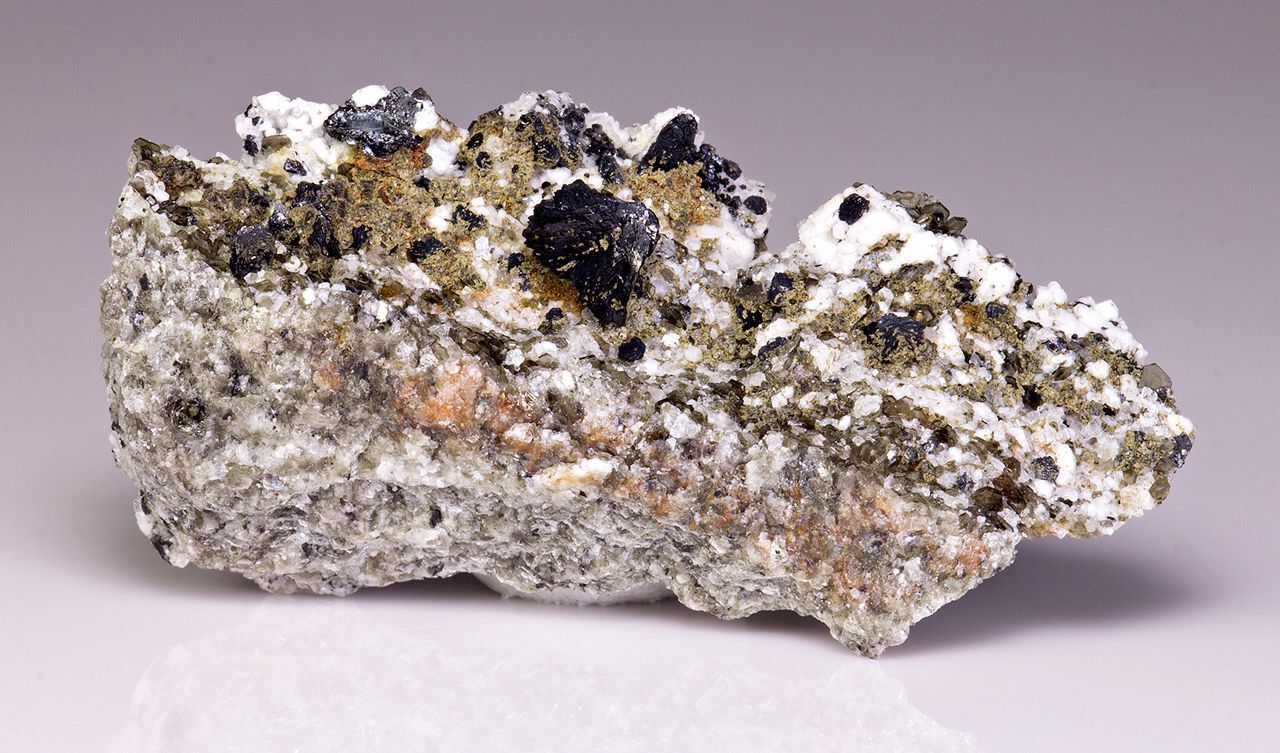
Cervandonite-(CE) is a rare and intriguing mineral that captures the interest of geologists and mineral enthusiasts alike. Found primarily in the Swiss Alps, this mineral is known for its unique composition and striking appearance. But what exactly makes Cervandonite-(CE) so special? For starters, it's a complex silicate mineral that contains rare earth elements like cerium, which contribute to its distinctive properties. Its rarity and the specific conditions required for its formation make it a subject of fascination. Whether you're a budding geologist or just curious about the natural world, learning about Cervandonite-(CE) offers a glimpse into the complexities of Earth's geological processes.
Key Takeaways:
- Cervandonite-(CE) is a rare mineral found in Switzerland, with unique properties and a complex chemical formula. It provides insights into the Earth's crust composition and tectonic processes, making it valuable for geological research.
- With a brown color and moderate hardness, Cervandonite-(CE) has uses beyond scientific study. It can be a source of rare earth elements, a teaching tool, and a prized specimen for mineral collectors.
What is Cervandonite-(CE)?
Cervandonite-(CE) is a rare mineral that has intrigued geologists and mineralogists alike. Its unique properties and composition make it a subject of fascination. Let's dive into some interesting facts about this mineral.
-
Cervandonite-(CE) was first discovered in Switzerland. This mineral was found in the Cervandone region, which is how it got its name.
-
It belongs to the silicate mineral group. Silicates are the largest and most important class of rock-forming minerals, making Cervandonite-(CE) part of a significant family.
-
The mineral contains cerium. Cerium is a rare earth element, and its presence in Cervandonite-(CE) adds to the mineral's rarity and value.
-
Cervandonite-(CE) has a complex chemical formula. Its formula is (Ce,La,Nd)(Fe^3+,Fe^2+,Ti)(SiO4)(Si2O7)O(OH), showcasing a mix of rare earth elements and iron.
-
It forms in metamorphic rocks. Metamorphic rocks are those that have been transformed by heat, pressure, or other natural processes, indicating Cervandonite-(CE)'s unique formation conditions.
Physical Properties of Cervandonite-(CE)
Understanding the physical properties of Cervandonite-(CE) can help in identifying and studying this mineral. Here are some notable characteristics:
-
Cervandonite-(CE) has a monoclinic crystal system. This means its crystal structure is asymmetrical, with three unequal axes.
-
The mineral is typically brown or reddish-brown. Its color can help in visually identifying it among other minerals.
-
It has a Mohs hardness of 5-6. This places it in the middle range of the Mohs hardness scale, indicating moderate hardness.
-
Cervandonite-(CE) exhibits a vitreous to resinous luster. This means it can appear glassy or slightly resin-like in its shine.
-
The mineral has a specific gravity of 4.5. Specific gravity measures the density of the mineral, and 4.5 is relatively high, indicating a dense mineral.
Geological Significance of Cervandonite-(CE)
Cervandonite-(CE) holds geological importance due to its unique formation and composition. Here are some facts highlighting its significance:
-
It is often found in association with other rare minerals. This includes minerals like allanite, titanite, and epidote, which can provide clues about the geological environment.
-
Cervandonite-(CE) can indicate high-grade metamorphism. Its presence suggests that the surrounding rocks have undergone significant metamorphic changes.
-
The mineral can be used to study rare earth element distribution. Since it contains cerium and other rare earth elements, it helps in understanding their geological distribution.
-
It provides insights into the Earth's crust composition. Studying Cervandonite-(CE) can reveal information about the materials that make up the Earth's crust.
-
Cervandonite-(CE) can help in understanding tectonic processes. Its formation is linked to tectonic activity, offering clues about past geological events.
Uses and Applications of Cervandonite-(CE)
While Cervandonite-(CE) is primarily of interest to scientists, it also has some practical applications. Here are a few:
-
It can be used in geological research. Scientists study Cervandonite-(CE) to learn more about mineral formation and metamorphic processes.
-
The mineral can be a source of rare earth elements. Cerium and other elements in Cervandonite-(CE) can be extracted for various industrial uses.
-
Cervandonite-(CE) is valuable for educational purposes. It serves as a teaching tool in geology and mineralogy courses.
-
It can be part of mineral collections. Due to its rarity and unique properties, Cervandonite-(CE) is a prized specimen for collectors.
-
The mineral can aid in environmental studies. Understanding its formation and distribution can help in assessing environmental changes and impacts.
The Final Word on Cervandonite-(CE)
Cervandonite-(CE) is a rare mineral with a fascinating story. Found in the Swiss Alps, it’s named after the Cervandone mountain. This mineral contains rare earth elements like cerium, which are crucial for modern technology. Its unique crystal structure and composition make it a subject of interest for geologists and mineralogists. Though not widely known, cervandonite-(CE) plays a small yet significant role in understanding Earth's geological processes. Collectors and researchers alike value it for its rarity and scientific importance. If you ever come across this mineral, you now know a bit more about its background and significance. Keep an eye out for those unique reddish-brown crystals; they’re a tiny piece of Earth's complex puzzle.
Frequently Asked Questions
Was this page helpful?
Our commitment to delivering trustworthy and engaging content is at the heart of what we do. Each fact on our site is contributed by real users like you, bringing a wealth of diverse insights and information. To ensure the highest standards of accuracy and reliability, our dedicated editors meticulously review each submission. This process guarantees that the facts we share are not only fascinating but also credible. Trust in our commitment to quality and authenticity as you explore and learn with us.
